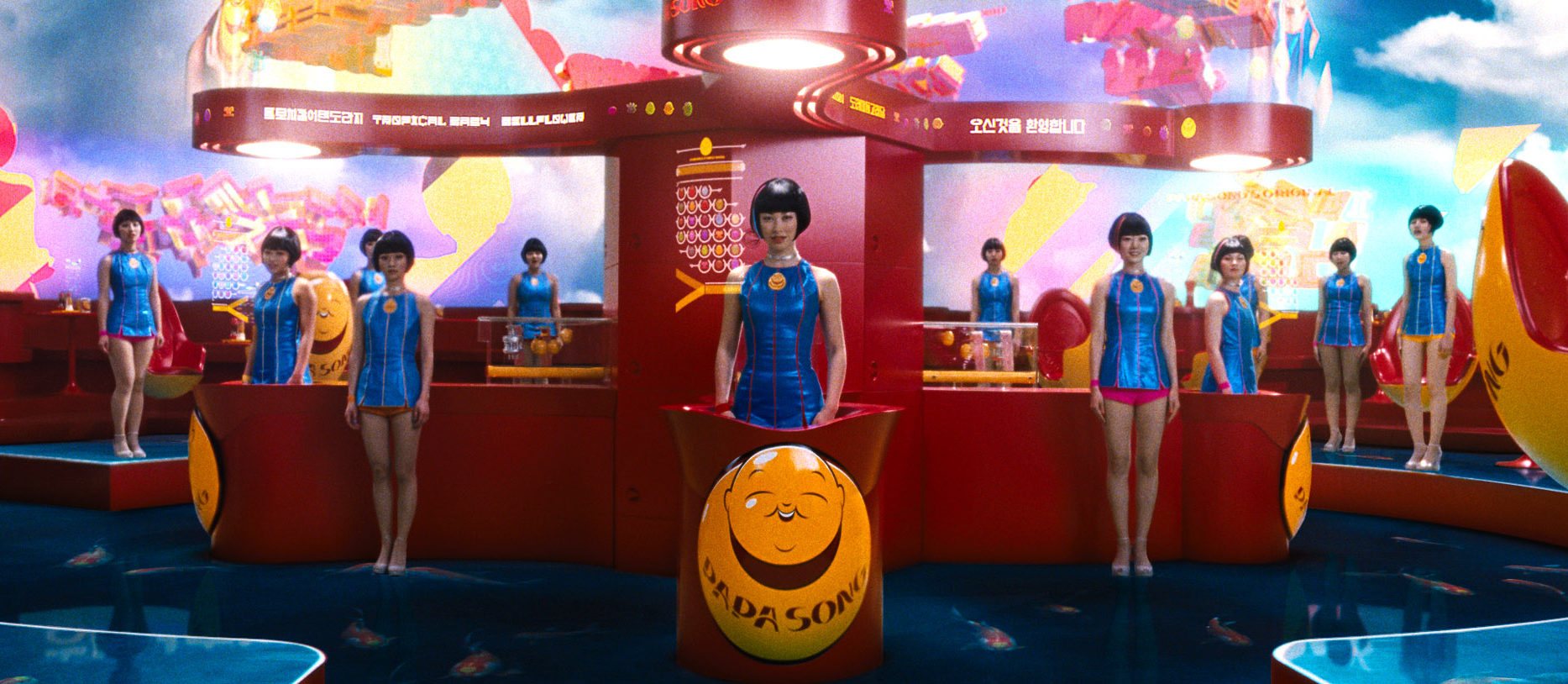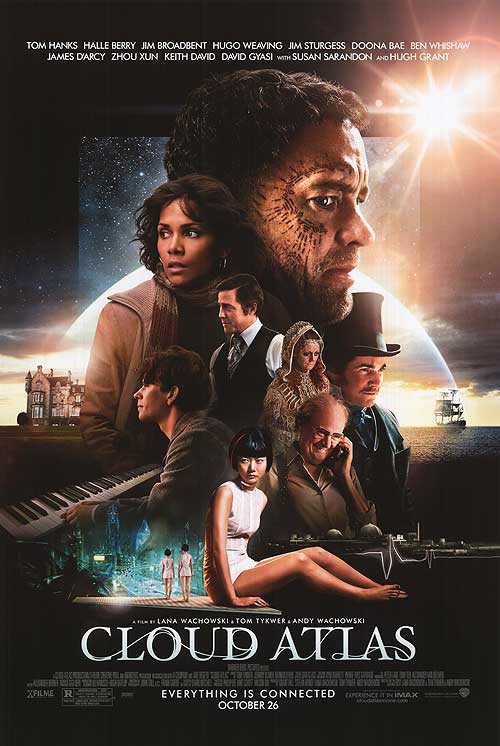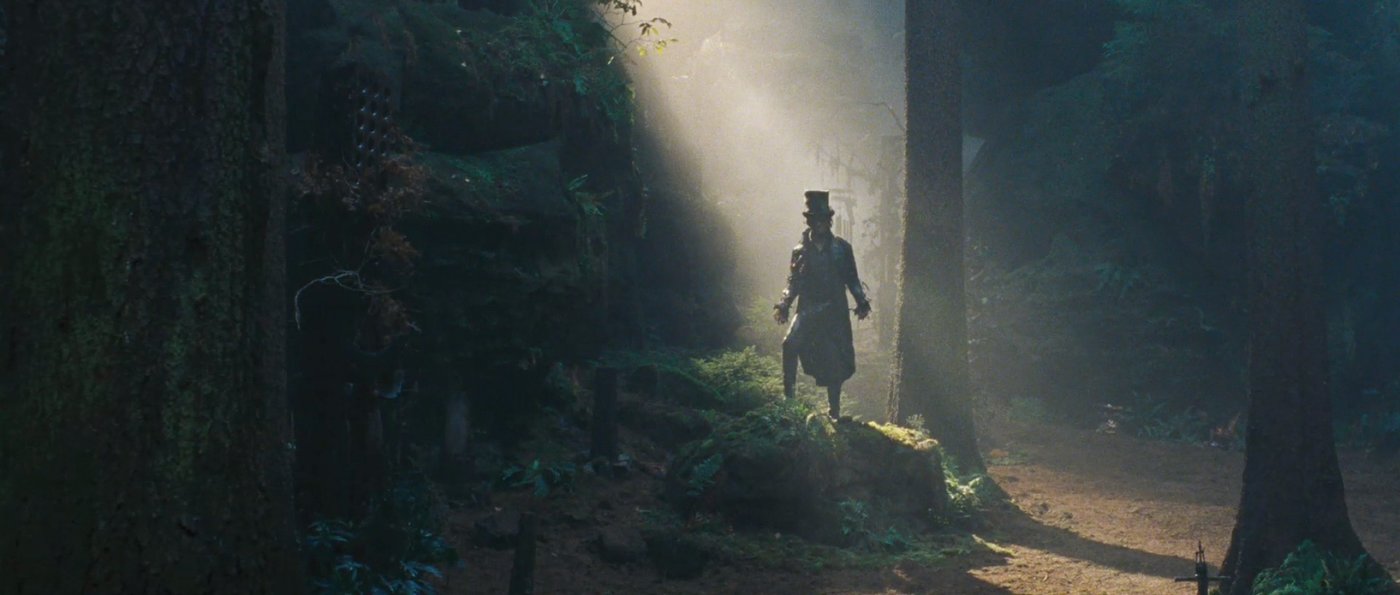

“This world spins from the same unseen forces that twist our hearts.”
Cloud Atlas tries to be everything all at once. Spanning hundreds of years and interweaving six distinct vignettes, it dips its toes into dozens of genres and themes, reincarnation and pantheism most prominent among them. It’s epic, ambitious, and never boring. But it is also scatterbrained and tedious, somehow overstuffed and yet lacking substance as three competent filmmakers earnestly strive to convince the viewer that their work is a profound masterpiece by virtue of its aspiration alone. To hammer at the idea of the universe’s interconnectedness, a core cast is reused up to six times apiece, their characters occasionally linked but usually not. Likewise, the connections between the stories seem coincidental if not extraneous, and it’s only the chaotic overlap that keeps us from immediately perceiving the shallow quality of each individual scenario. The pantheistic theme is telegraphed from the initial frame and reinforced each time we see Tom Hanks in a new disguise, and so we come to expect an invigorating culmination that sadly never comes. In the end, competing visions play tug of war and bury the few inspired moments beneath a gaudy veneer of cheap latex and gimmicky editing. Failing to coalesce into a satisfying whole, it is difficult to see Cloud Atlas as a film that justifies a three hour runtime.
Let’s consider Tom Hanks, who gets top billing and seems to have helped get the project off the ground when financiers got cold feet. He’s most prominent in a story set in 2321 on a distant planet where a primitive tribe worships a woman named Sonmi and regards her written words as a sacred text. The film opens at the end of this story, with a grizzled and scarred Hanks speaking in a Nadsat-derivative language. Though lacking technology themselves, they are visited by an advanced human civilization that uses nuclear-powered ships. One of these Prescients, as they’re called, is played by Halle Berry. Initially the two distrust one another, but after a series of exchanged favors and near-death encounters with a cannibal tribe, they fall in love. In the oldest story, set in 1849, Hanks plays a doctor aboard a galleon where he slowly poisons a rich patron played by Jim Sturgess in an attempt to steal his chest full of gold for himself. In a story set in 2012, he plays a reformed gangster who writes a critically-panned memoir and then theatrically murders a critic to generate sales. In 1973 he’s a research scientist who helps Berry’s investigative reporter. He has two additional peripheral roles.

But Hanks is only the focal point of the far-future storyline. Sturgess’s lawyer character is the prominent figure aboard the ship where he advocates for a former slave to join the crew as a free man. When the freed slave rescues him from the clutches of Hanks’ doctor, his worldview is changed and he joins the abolition movement. Berry stars in the 1973 storyline where she teams up with Keith David to expose a plot to sabotage a nuclear reactor and manufacture a crisis, dodging assassination attempts and outwitting criminal masterminds in the process. In the timeline where Hanks is a gangster, Jim Broadbent plays a book publisher who unwittingly checks himself into an authoritarian nursing home to try and avoid doling out the book’s profits and then runs through a comedic pocket edition of One Flew Over the Cuckoo’s Nest.
There are two additional stories that I haven’t remarked upon yet (the two in which Hanks doesn’t feature very much). One is set in 1936 and focuses on Ben Whishaw as a pianist employed as an amanuensis for an aging composer played by Broadbent. It’s perhaps the most emotionally resonant of the six stories and Whishaw’s performance the most impactful as the pair work together to create “The Cloud Atlas Sextet” and then come to a deadly disagreement over its authorship. The other is set in a dystopian Neo Seoul in 2144 where Bae Doona’s humanoid clone character learns to think for herself and joins Sturgess’s rebellion against the totalitarian state. This storyline is the most intriguing for those looking for echoes of the Wachowskis’ Matrix trilogy. Hugo Weaving, who plays a series of one-dimensional villains, is perhaps the only actor whose characters seem cohesively linked.

Though the central characters never cross paths, their stories are tied together by their shared struggles and the butterfly effect. Physical media plays a large role in tying the vignettes together. A journal kept by the lawyer, letters exchanged between the pianist and his lover, a cinematic rendition of the book publisher’s escape from confinement, the recorded testimony of the fabricant Sonmi—these echo the themes of the older stories into the newer ones. As we pinball back and forth between the various timelines these connections become apparent but never amount to a strong thematic statement. If asked to succinctly state the film’s thesis, I would propose that it is trying to suggest that none of us are truly an isolated individual; that our wills are not entirely independent, but influenced by the past choices of others; that our decisions, in turn, will ripple into the future and cause unforeseen consequences. Heroism, cowardice, love, hate, charity, selfishness—if we are formed to live in a certain way, we will pass that way of life onto our descendants and thus our actions will reverberate across generations and geographies. If we have been formed by a sinful influence, it is our duty to root that out and thus stop the propagation of evil that would have occurred through our most intimate relationships. I obviously must disagree with the film’s suggestion that reincarnation is the universal guiding principle—rather than looking toward the Incarnation of the Word of God, who returned love for hate and accepted death so that all may have life (you know, like the perfect capstone when looking for a solution to sin)—but that’s another can of worms and it doesn’t beat you over the head with it so I’ll digress.
And yet it is a fun ride while we’re on it, hopscotching across time and space with each blink of the eye. Indeed, as we jump amongst the stories and absorb them in little one minute chunks, it is remarkable how effectively our conditioned response to the standard blockbuster arc allows us to accept the momentum of the whole rather than nitpick the shortcomings of the distinct sequences. But upon further analysis, it seems that the juxtaposition gimmick doesn’t really add anything to the film other than to keep each story fresh in our minds for the duration. It doesn’t build toward a unified climax—unlike D.W. Griffith’s Intolerance which did a similar thing only better almost a hundred years prior—and instead becomes an empty novelty. It’s only relative to the lofty expectations that stem from the involvement of Tom Tykwer and the Wachowskis and David Mitchell’s well-regarded source novel that Cloud Atlas doesn’t quite measure up. Any other filmmakers approaching a project of such scope would be applauded. And I don’t think it’s an utter failure. The filmmakers deserve credit for getting such an ambitious project onto the screen at all (independently financed, no less) and it has its moments. But with all of its pseudo-profundities and CGI action, on balance Cloud Atlas is not much more more than a bloated collection of B movies undergirded with dorm room philosophy.